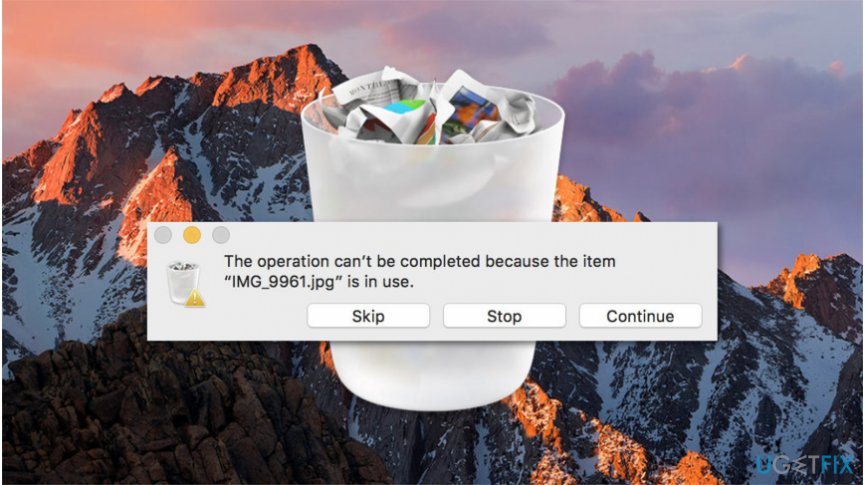

- #MAC TERMINAL FORCE EMPTY TRASH MAC OS#
- #MAC TERMINAL FORCE EMPTY TRASH INSTALL#
- #MAC TERMINAL FORCE EMPTY TRASH FULL#
- #MAC TERMINAL FORCE EMPTY TRASH MAC#
Such files prevent you from emptying the trash all at once and take a few additional actions to successfully erase the junk from your computer.
#MAC TERMINAL FORCE EMPTY TRASH MAC#
When removing junk files from your Mac you will occasionally come across either a locked file or an item that is in use by one of the apps. For those of you who want to take Trash management into their own hands, here is a list of top tips and tricks to help you along the way Force Delete Trash: Mac Tips You Should Know

It will make sure your Mac runs well and your Trash is taken out regularly.
#MAC TERMINAL FORCE EMPTY TRASH INSTALL#
If you don’t ever want to come back to Trash management, simply install a reliable cleaning assistant. However, sometimes things don’t go as expected and getting rid of your trash can take a bit of extra effort. The great news for those of you just starting out with Mac is that, in most of the cases, that is all you will ever have to do. Drag a file to the Trash bin on your Dock (or hit command + delete after selecting the file(s)), then control-click Trash icon and hit Empty Trash – You are done! Just like that. Let us know in the comments below.Removing trash on a Mac is as easy as 1-2-3. It seems it should not be required while in Recovery mode, but I haven't tested it.
I don't know if that was actually required or not. Note: I actually ran csrutil disable before step 8 and then csrutil enable after step 9, to temporarily disable the System Integrity Protection. Rm -rf /Volumes/Macintosh\ HD/Users/bob/.Trash/?* Verify by running this in Terminal: ls /Volumes/Macintosh\ HD/Users/bob/.Trash/?*Īnd check that it contains those files you want to delete. Remember to replace bob there with the right user name.
#MAC TERMINAL FORCE EMPTY TRASH FULL#
The full path to your trash will be something like this: /Volumes/Macintosh\ HD/Users/bob/.Trash/?*

Prefix the path you noted down with that. The "Macintosh HD" will be available under /Volumes/Macintosh\ HD.
#MAC TERMINAL FORCE EMPTY TRASH MAC OS#
Here are the steps that worked for me on Mac OS 10.15.4:įind out the path to your Trash by running this command in Terminal echo /Users/$(whoami)/.Trash/?* However you must first mount your Macintosh disk (at least on Catalina) to get access to the Trash while in Recovery mode. I also verified that this file is on the read-write Data partition: sh-3.2# ls -l /System/Volumes/Data/Users/elliott/.Trash/Security/usr/Īs mentioned, you can fix this in Recovery mode itself. Write_nocancel(0x2, "Operation not permitted\n\0", 0x18) = 24 0 I have already given Terminal full disk access in System Preferences.Ĭhecking the rm command with dtruss I see it fails here: unlink(".Trash/Security/usr/X11R6\0", 0x0, 0x0) = -1 Err#1 Rm: Security//usr/X11R6: Operation not permittedįifteen.Trash elliott$ ls -l Security/usr/ DS_Storeĭrwxr-xr-x 3 root wheel 96 Nov 11 21:42 Securityįifteen.Trash elliott$ sudo rm -rf Security/ OK let's try in Terminal: fifteen.Trash elliott$ pwd ls -alĭrwx- 4 elliott staff 128 Nov 11 21:44 125 elliott staff 4000 Nov 10 22:23 1 elliott staff 135172 Nov 11 21:44. It's a link to /opt/X11 which is a regular directory. Trying to empty from Finder warns X11R6 can't be modified or deleted because it's required by macOS. I'm having trouble emptying the trash on Catalina.


 0 kommentar(er)
0 kommentar(er)
